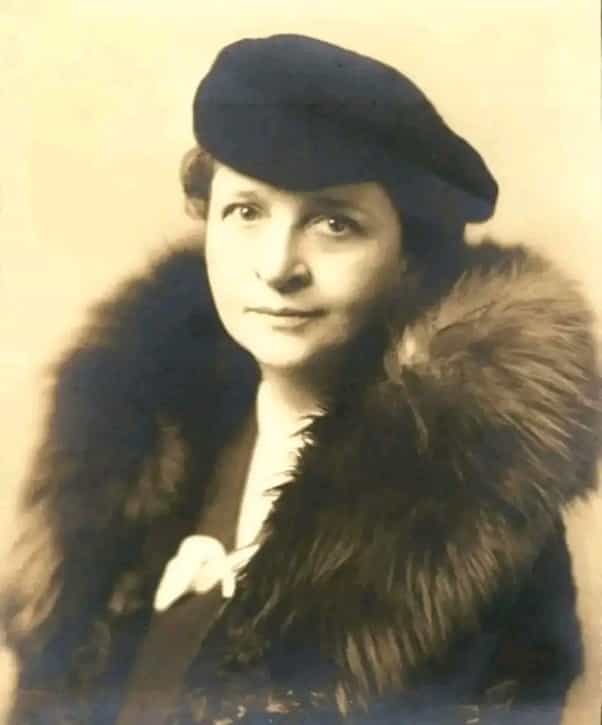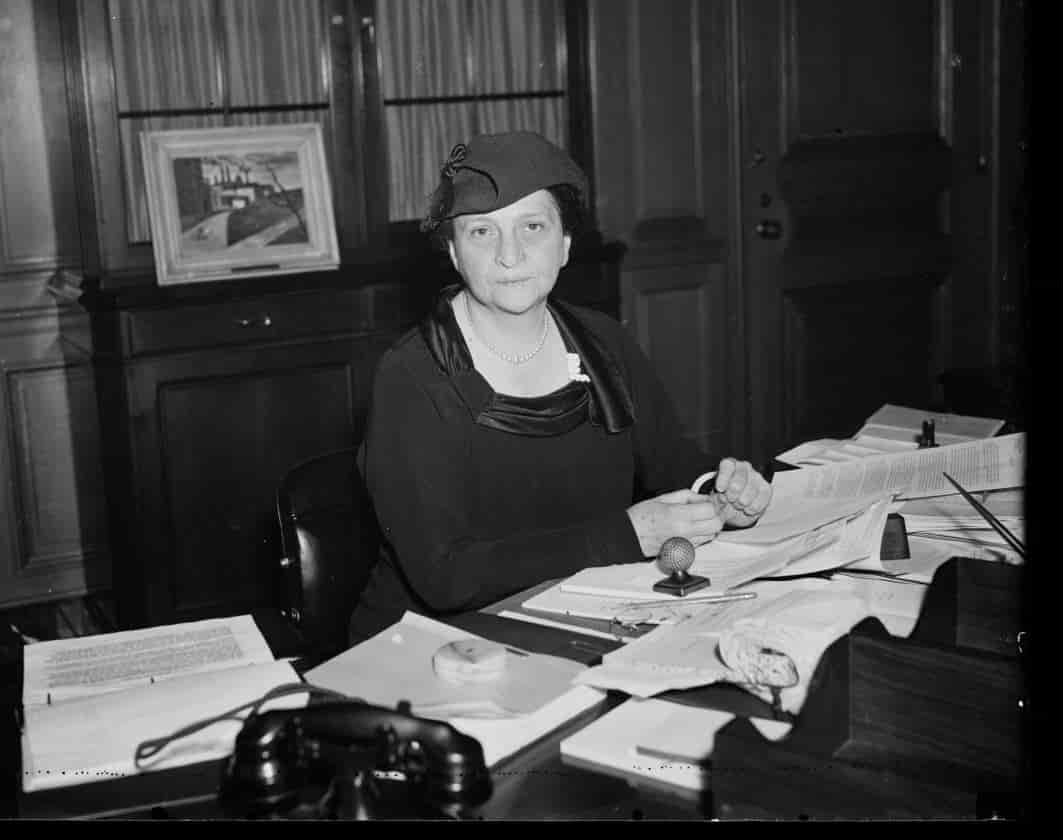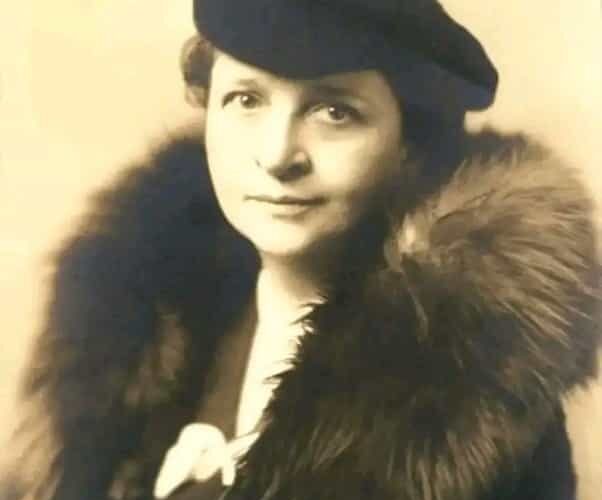Frances Perkins : The Woman Behind the Weekend, Minimum Wage, and Safer Working Conditions

Frances Perkins, a pioneering figure in American history, was the first woman appointed to a U.S. presidential cabinet, serving as Secretary of Labor under President Franklin D. Roosevelt. Her role was not only historic for its gender barrier-breaking significance but also transformative due to her profound influence on the New Deal, a series of programs and policies aimed at countering the Great Depression. As the chief architect behind the New Deal’s social safety net programs, Perkins’ contributions reshaped American labor laws, workers’ rights, and social welfare systems.
This article dives deep into Perkins’ involvement in the New Deal, her background, and the monumental impact she left on labor rights and the welfare of American citizens.
Early Life and Career of Frances Perkins
Born on April 10, 1880, in Boston, Massachusetts, Frances Perkins was raised in a progressive household that emphasized education and community service. She attended Mount Holyoke College, where she developed an early interest in social reform. This passion for social justice took her to various positions in social work and led to her active involvement in labor advocacy.
Perkins became well-acquainted with issues affecting laborers, especially women and children, working in factories under exploitative conditions. Her experiences witnessing tragedies like the Triangle Shirtwaist Factory fire of 1911, which killed 146 garment workers, cemented her resolve to advocate for safer working environments and fair labor practices. This dedication set the stage for her future work under Franklin D. Roosevelt’s administration.
The Appointment to Roosevelt’s Cabinet
Frances Perkins’ path to becoming Secretary of Labor was unconventional. Initially reluctant to accept the position, she agreed under the condition that she would have President Roosevelt’s full support in pursuing progressive labor reforms. She brought with her a prepared agenda, which included unemployment relief, fair labor standards, and the establishment of a social safety net. Her appointment in 1933 made her the first woman in the United States to serve in a presidential cabinet.
Perkins’ Role in Shaping the New Deal
As Secretary of Labor, Frances Perkins was instrumental in crafting and implementing the New Deal, a suite of programs and policies Roosevelt launched to combat the economic devastation of the Great Depression. Perkins’ proposals focused on improving labor conditions, reducing unemployment, and providing financial security for the vulnerable. Here are some of her landmark achievements within the New Deal framework:
1. The Social Security Act of 1935
One of Perkins’ most enduring legacies is her role in creating Social Security, a social insurance program designed to provide financial assistance to elderly Americans, unemployed individuals, and those with disabilities. Perkins worked tirelessly to draft, advocate for, and implement the Social Security Act of 1935, despite significant political opposition. Her vision for Social Security laid the foundation for the modern welfare state, ensuring a safety net for millions of Americans.
The Social Security Act marked a pivotal shift in government responsibility, as it was one of the first instances of federal intervention to provide economic security for citizens. The act covered retirement benefits, unemployment insurance, and aid for the needy, establishing a comprehensive system that supported the vulnerable.

2. Unemployment Insurance and Workers’ Rights
Perkins’ efforts in the New Deal also focused on unemployment insurance. She understood the critical need for a system that would support workers between jobs, especially during economic downturns. By establishing a federal-state system of unemployment insurance, Perkins created a mechanism to stabilize the economy by ensuring that workers had purchasing power, even during layoffs.
In addition, Perkins was an advocate for workers’ rights and pushed for the development of the National Labor Relations Act (also known as the Wagner Act). This act solidified the rights of employees to form unions, collectively bargain, and strike, providing workers with legal recourse to advocate for fair wages, benefits, and safe working conditions.
3. Fair Labor Standards Act of 1938
The Fair Labor Standards Act (FLSA) was another landmark achievement under Perkins’ tenure. Passed in 1938, the FLSA established a national minimum wage, mandated overtime pay, and restricted child labor. It was revolutionary, as it addressed exploitative labor practices and set standards for fair compensation and working hours.
Through the FLSA, Perkins aimed to protect the most vulnerable laborers, including women and children, from being overworked and underpaid. By instituting a 40-hour workweek and limiting child labor, the FLSA helped define a new era in American labor policy that emphasized dignity, respect, and fair treatment in the workplace.
4. Public Works Programs
To combat the high unemployment rates of the Great Depression, Perkins was instrumental in promoting public works projects that created jobs for millions of Americans. Programs like the Civilian Conservation Corps (CCC), the Works Progress Administration (WPA), and the Public Works Administration (PWA) provided employment in infrastructure, arts, and community projects across the country.
These public works programs not only alleviated unemployment but also modernized American infrastructure, including schools, roads, and public buildings. Perkins believed that government investment in public works was essential for economic recovery and social progress, as it empowered individuals to regain dignity through employment.
Frances Perkins’ Legacy
Frances Perkins’ influence extended far beyond her tenure in Roosevelt’s cabinet. Her reforms became the backbone of America’s social safety net and labor rights policies. The programs she championed, from Social Security to minimum wage laws, continue to serve as pillars of American social policy.
Perkins’ dedication to social reform was guided by a belief in the government’s responsibility to protect its citizens. Her work empowered generations of laborers, gave economic security to retirees, and created a system that prioritized human rights and dignity. As the first woman in a cabinet position, Perkins also paved the way for future generations of women to break barriers in government and leadership roles.
Challenges and Criticisms
While Frances Perkins is widely celebrated, she also faced opposition from politicians and businessmen who opposed federal intervention in labor and social welfare issues. Many argued that her policies disrupted free-market principles and placed too much control in the hands of the federal government.
Furthermore, Perkins faced criticism for her commitment to New Deal policies that were occasionally seen as overstepping the boundaries of government intervention. Despite these challenges, Perkins remained resolute in her vision for a fair and just America. Her legacy is a testament to her ability to navigate political resistance and transform her ideas into policies that would benefit generations.
Frances Perkins was a visionary reformer who reshaped American society through her work on the New Deal. Her efforts in creating Social Security, unemployment insurance, the Fair Labor Standards Act, and public works programs established a legacy of compassion and government accountability to its citizens. Through her life’s work, Perkins ensured that the federal government would play an essential role in securing the economic well-being of Americans, a legacy that remains integral to the nation’s social fabric.
As the primary architect of many New Deal reforms, Frances Perkins’ contributions have made her a monumental figure in American history. Her policies created pathways for economic recovery and set standards for labor rights that still protect American workers today.
FAQ: Frances Perkins and the New Deal
1. Who was Frances Perkins?
Frances Perkins was the first woman to serve in a U.S. presidential cabinet. Appointed by President Franklin D. Roosevelt as Secretary of Labor in 1933, she played a significant role in shaping the New Deal policies that aimed to address the challenges of the Great Depression.
2. What was the New Deal, and how did Perkins contribute to it?
The New Deal was a series of programs, policies, and reforms introduced by President Roosevelt to revive the U.S. economy during the Great Depression. Frances Perkins contributed extensively to the New Deal, advocating for Social Security, unemployment insurance, fair labor standards, and public works programs, which collectively transformed American labor rights and social welfare.
3. What was Frances Perkins’ role in creating Social Security?
Frances Perkins was instrumental in drafting and implementing the Social Security Act of 1935, which provided retirement benefits, unemployment insurance, and financial assistance for the disabled. Her advocacy and vision for a national social insurance program laid the groundwork for Social Security as we know it today.
4. What did the Fair Labor Standards Act (FLSA) accomplish, and how was Perkins involved?
The Fair Labor Standards Act of 1938, another significant part of the New Deal, established a national minimum wage, regulated working hours, and prohibited child labor. Perkins was a strong advocate for these protections, which aimed to improve labor conditions, prevent exploitation, and set fair compensation standards for American workers.
5. How did Frances Perkins impact workers’ rights in the United States?
Perkins was a driving force behind labor reforms that strengthened workers’ rights, including the right to form unions, collectively bargain, and strike for fair treatment. Her support for the National Labor Relations Act protected these rights, empowering workers to seek fair wages, benefits, and safe working conditions.
6. Why was Frances Perkins’ appointment as Secretary of Labor significant?
Frances Perkins’ appointment in 1933 marked the first time a woman held a U.S. cabinet position. Her achievements in labor reform and social welfare redefined the role of women in government and opened doors for future generations of women in leadership.
7. What public works programs did Frances Perkins help establish?
Perkins promoted several public works programs, including the Civilian Conservation Corps (CCC), the Works Progress Administration (WPA), and the Public Works Administration (PWA). These programs provided jobs for millions of Americans while improving infrastructure like roads, schools, and public buildings across the country.
8. What challenges did Frances Perkins face in implementing New Deal policies?
Frances Perkins faced political resistance from lawmakers and business leaders who opposed federal intervention in labor and social issues. Some critics viewed her policies as intrusive on free-market principles. Despite these challenges, Perkins remained steadfast, working to establish essential social protections.
9. How has Frances Perkins’ work influenced modern social welfare programs?
Many of the programs Perkins helped create, such as Social Security, unemployment insurance, and labor protections, are still cornerstones of the American welfare system. Her legacy continues to influence modern policies that support workers’ rights and economic security.
10. What is Frances Perkins’ legacy today?
Frances Perkins is remembered as a visionary leader and social reformer. Her pioneering work in labor law and social welfare set standards for workers’ rights, economic security, and government responsibility, impacting countless lives and solidifying her place in American history as a key figure behind the New Deal.

